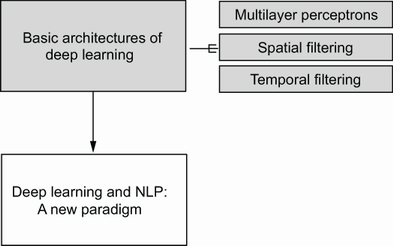chapter two
After reading this chapter, you will have a clear idea of how deep learning works in general, why it is different from other machine learning approaches, and what it brings to the field of natural language processing. This chapter introduces you to some Keras concepts and their implementation details through examples.
Let’s investigate the basic architectures of deep learning: multilayer perceptrons and different forms of filtering input, spatial and temporal (see figure 2.1).
